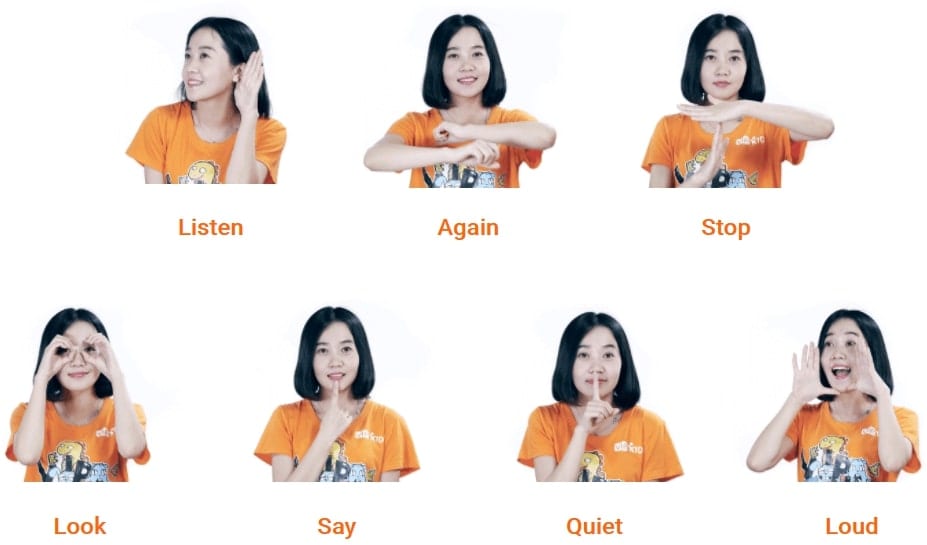I have had lots of students from various countries and nationalities. At first I was really excited and worried to teach my first Russian students, apart from Armenians. The fact that Russian is not my mother tongue seemed to bring some challenges. However, the communicative methods helped me to overcome all the obstacles of teaching Russian students. Soon, I felt ready to face some new challenges and, why not difficulties, of working with students whose L1 I do not speak at all. Finally, I got the opportunity to join the Chinese project and teach English to Chinese students. Most of my students are from Hong Kong, they are 9 or 10 years old. I was really very surprised when I found out how responsible and organized Chinese students may be. They do know why they learn the language, they respect their teacher and are willing to do all tasks given by a teacher. They do not need their parents to be present at the lesson, as they are able to solve almost all the technical problems that may occur during our classes. The only thing that I had to get used to was having lessons through WeChat and not Skype. The latter is not popular in China, instead of it, they use WeChat, which, unfortunately, does not have all important functions that we are used to, like sharing your screen or sounds. Today I am going to share with you some tips on how to overcome difficulties of not knowing L1 with Chinese students.
Working with Chinese students differs greatly. In the beginning it may seem really difficult to teach them, because they live in different language environment, they are used to things that are not usual for us. If working with Russian students you may find some similarities in the vocabulary, you won’t find any of them with Chinese students. They are also used to learning through repetition and in this way they are able to recall information. While it may sound boring and inconsistent with the approaches we are used to, it’s an important technique to help your students learn. You can combine your own methods with the drilling and get your students master grammar and vocabulary. To find some interesting and useful ways of drilling with kids, check our previous article.
When teaching Chinese students, as any other students, be sure to follow the basic rules for classroom management in every lesson.
Be patient
Of course, in the first period of your classes, the interaction with your students may be really difficult. Some of your students may get irritated of not understanding your instructions or your requests. But be patient, both your students and you will need some two or three lessons to get used to it. After, they will be even happy to turn up in the English — speaking environment.
Use clear and short instructions
Keep in mind that they may not understand your complicated instructions, like “Could you please read the text and tell me what the main point of the text is?”. Instead, you can say: “Read the text.”. After he/she reads it, you can go on with working on the text: “What is the text about?”Hence choose the vocabulary that you use carefully and simplify your sentences.
Make yourself more comprehensible
Interaction is not only about words. If you see that your students do not understand you, especially beginners, use non-verbal communication. Hand gestures, actions, pictures, posters, drawings and text can all make the input comprehensible. In this regard, it should also be mentioned that the tone and intonation of your voice are of crucial importance as well. You can even apply the techniques that you use to communicate with a child. If you work with children, check the following article to find some other ways and exercises to make the input comprehensible with them.
Now let’s’ talk about the peculiarities of working with Chinese students.
Use TPR
One of the best ways to communicate with kids, and Chinese students are not an exception, is through TPR. Total physical response (TPR) is an approach to teaching the second language that was developed in the 1970s by James Asher. Asher noticed that children’s early language acquisition consisted mostly of listening to adults telling them what to do: “Sit down.” “Open your mouth.” “Look at me.” To perform the movements the child would look at the parents for clear instructions. Asher adopted this practice applied it in second language learning. It is a very effective way for teaching beginners and the ones whose native language you do not speak. Hence, every time you give instructions or make corrections, use TPR — connecting your body and mind together, making the input more comprehensible. For example, you can teach them “Look at me”, “Sit down”, “Stand up”, etc. by repeatedly doing the actions. Keep in mind that some gestures that we usually use with students of other nationalities may not fit with the Chinese ones. Below you can see the most wide-spread gestures among that I use with my Chinese students.

Apart from that, you can also use action songs which are actually TPR, but with music. My Chinese students are really good at listening and have good ears. They enjoy singing songs with me and are not shy. Even while doing some grammar exercises they start singing the songs we have learnt that day.

You can learn more about TPR with kids here and here.
Use Google Translate
Despite all the above-mentioned ways, it sometimes can be really difficult to make Chinese students understand you. In this respect, Google Translate turns out to be very useful. It can save your time if, apart from writing the text in the box, you use other functions of it. Among useful functions of Google translate are a camera, conversation and voice. With the help of ‘camera’ you can translate screenshots, images or documents in PDF file. You do not have to type the whole text in the box, you just need to download the file or take a photo on spot. Next function that really works incredibly is ‘conversation’. All you need is to say your ideas and it will translate into Chinese uttering the whole sentence. So it allows to have a conversation with a foreign language speaker. The last function which is also considered to be important is ‘voice’. You can record your sentences or one word, and it will show you in the target language in a written form.

So, do not be afraid of not knowing L1 while teaching Chinese students. You may always benefit from challenges and obstacles you come across, and then have a wide range of experience in teaching foreign students.






 Анна Тетерина
Анна Тетерина 
 Анастасия Юферева
Анастасия Юферева 


